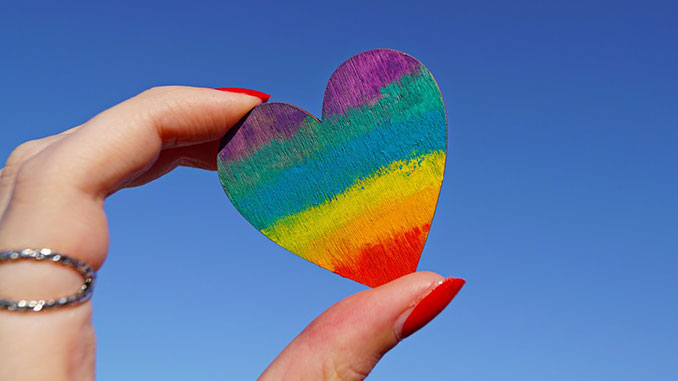 Aiming to increase understanding of the funding needs of LGBTIQ+ communities in Australia, LGBTIQ+ community-led funders Aurora and GiveOUT, have launched the new national research report: Where are the Rainbow Resources? Understanding the funding needs of the LGBTIQ+ community sector in Australia.
Aiming to increase understanding of the funding needs of LGBTIQ+ communities in Australia, LGBTIQ+ community-led funders Aurora and GiveOUT, have launched the new national research report: Where are the Rainbow Resources? Understanding the funding needs of the LGBTIQ+ community sector in Australia.
“As both organisations that partnered to produce this report are LGBTIQ+ community-led funders, we proudly bridge both the community and philanthropic sectors,” said Sam Turner, Chair, Aurora.
“This unique perspective has allowed us to identify a demand for greater understanding and evidence in relation to LGBTIQ+ communities’ needs and aspirations, and opportunities for funders to play a pivotal role in progressing social change for this under-resourced cohort.”
“The Australian LGBTIQ+ community sector is innovative and vibrant. It brims with both formal and informal initiatives through which LGBTIQ+ people are supporting themselves and each other, and taking action to create positive change and thriving communities,” said Ms Turner.
LGBTIQ+ communities are one of Australia’s most wonderful, yet under-resourced, populations. Among other findings, Where are our Rainbow Resources? discovers that in 2021, almost 40% of LGBTIQ+ community organisations operated on less than $10,000 income.
Drawing on a sector-wide survey, interviews with LGBTIQ+ community leaders, and a national literature review, this ground-breaking report explores the issues impacting LGBTIQ+ communities in Australia today, what the sector working on these issues looks like, and the pivotal role it plays. Including:
Five years post-marriage equality, LGBTIQ+ communities in Australia continue to experience isolation, discrimination, and poorer health and economic outcomes than their non-LGBTIQ+ peers:
- LGBTIQ+ people have the highest rates of suicidality compared with any other population in Australia.
- Over three quarters of LGBTIQ+ people living in rural and regional areas do not have access to LGBTIQ+ inclusive mental health services.
- Less than half of LGBTIQ+ students feel safe at school.
- Non-consensual medical interventions are still frequently performed on people with intersex variations as babies, children, or adolescents. This internationally recognised human rights violation is still legal in Australia.
- One third of transgender people have experienced homelessness.
The LGBTIQ+ community sector has a strong history of achieving progress on many fronts, including:
- Amendments to the Sex Discrimination Act.
- Positive shifts in public perception and LGBTIQ+ representation.
- Marriage equality.
- The recent quashing of the Religious Discrimination Bill.
- The LGBTIQ+ community sector has been central to the progress made so far, and is key to achieving equality for all Australians regardless of their sexual orientation, gender identity or sex characteristics.
LGBTIQ+ communities are one of the least common beneficiary groups served by Australia’s charities. Only 0.2% of all registered charities in Australia have LGBTIQ+ communities as their primary beneficiary, and only another 2.8% include LGBTIQ+ communities as a group that they serve.
LGBTIQ+ organisations are working across the country. However, 71% of LGBTIQ+ community sector survey respondents had their head office in either New South Wales or Victoria, with a heavy concentration in the capital cities (57% had their head offices in either Sydney or Melbourne).
LGBTIQ+ communities are amongst the least funded cohorts in Australia:
- 39% of LGBTIQ+ community sector survey respondents operate on a budget of less than $10,000 per year.
- Registered LGBTIQ+ organisations receive just 5 cents out of every $100 received by Australian charities.
- Transgender and intersex organisations are the least funded groups under the LGBTIQ+ umbrella.
- Almost three quarters of LGBTIQ+ organisations providing services to clients experienced an increase in demand over the past year, yet 33% said they ceased delivering a service or program due to lack of funding.
Historically, the Australian philanthropic sector has not invested in LGBTIQ+ communities. Seven out of every ten LGBTIQ+ community sector survey respondents said they received no support from philanthropic foundations.
The lack of funding for the LGBTIQ+ community sector means many organisations are under-staffed and depend on volunteers. More than half of the respondents to the LGBTIQ+ community sector survey said that they currently have no paid staff.
“As this report outlines, despite being a relatively new ecosystem, the sector has achieved a significant amount. It has forged new values and practices that not only benefit LGBTIQ+ community members but also wider Australian society in countless positive ways,” said David Anthony, Chair, GiveOUT.
“But we know there is so much more potential waiting to be unleashed by a well-resourced LGBTIQ+ community sector. The opportunities are as many as the needs are great, but a significant lack of funding for LGBTIQ+ causes persist.”
“We hope funders read this report and gain a deeper understanding of LGBTIQ+ communities, the sector landscape, and what to do next to fund effectively within it. We hope LGBTIQ+ organisations read this report, are proud of what they have achieved, and find it useful in advocating for greater support for their important work,” said Mr Anthony
Finally, the report recommends five key steps funders can take to improve outcomes for LGBTIQ+ communities including increasing funding support for LGBTIQ+ community organisations, being a good ally, and learning how LGBTIQ+ issues and experiences intersect with their other funding focus areas.
Stay tuned for sector-based workshops digging into how your organisation can use the research. For more information and to download a copy of the Report, visit: www.rainbowresources.org.au for details.
Image: Rainbow Heart (sourced)
